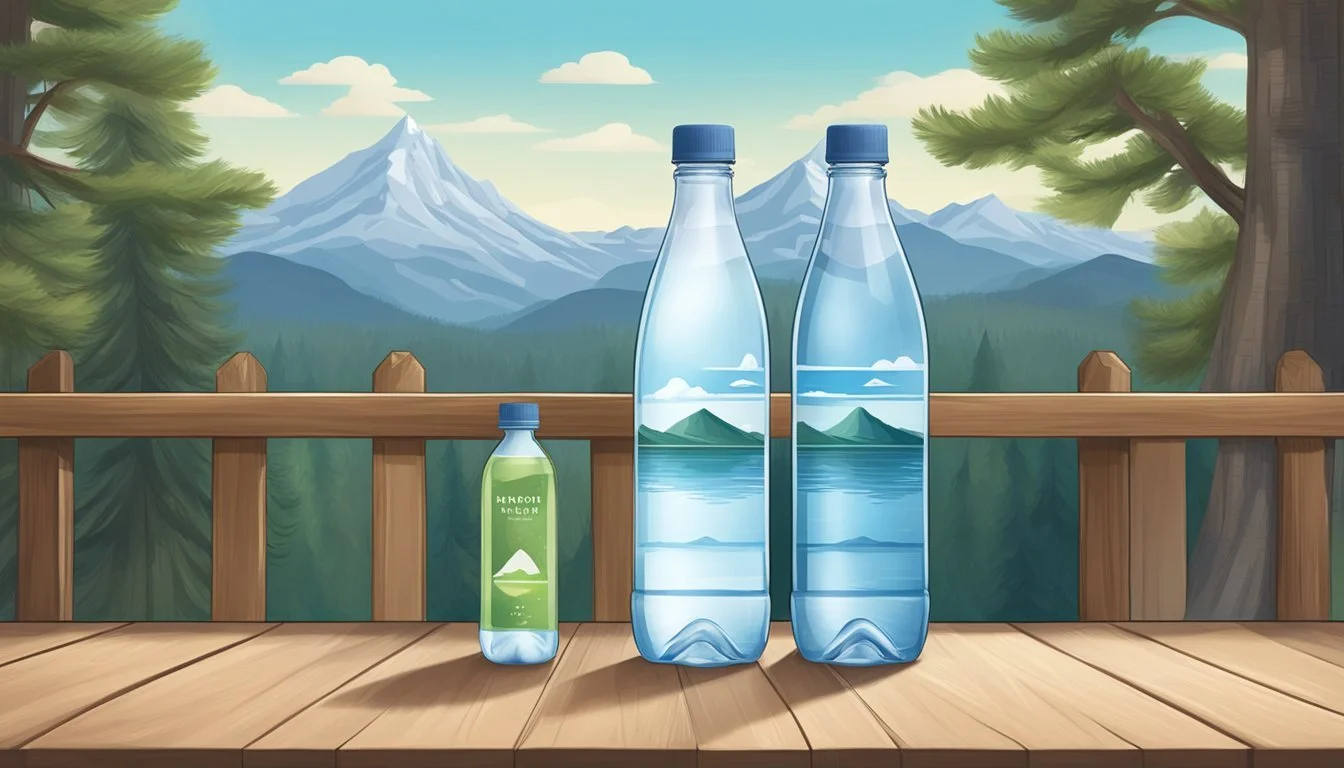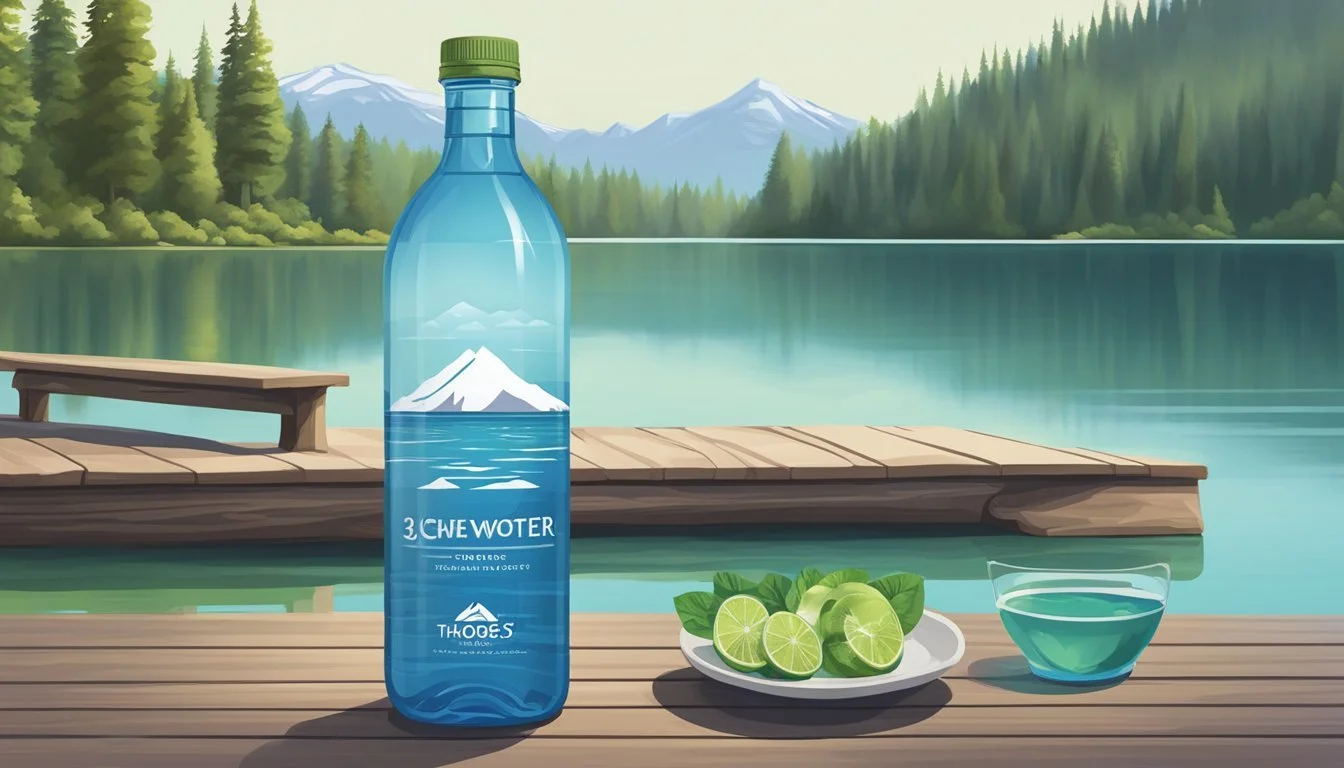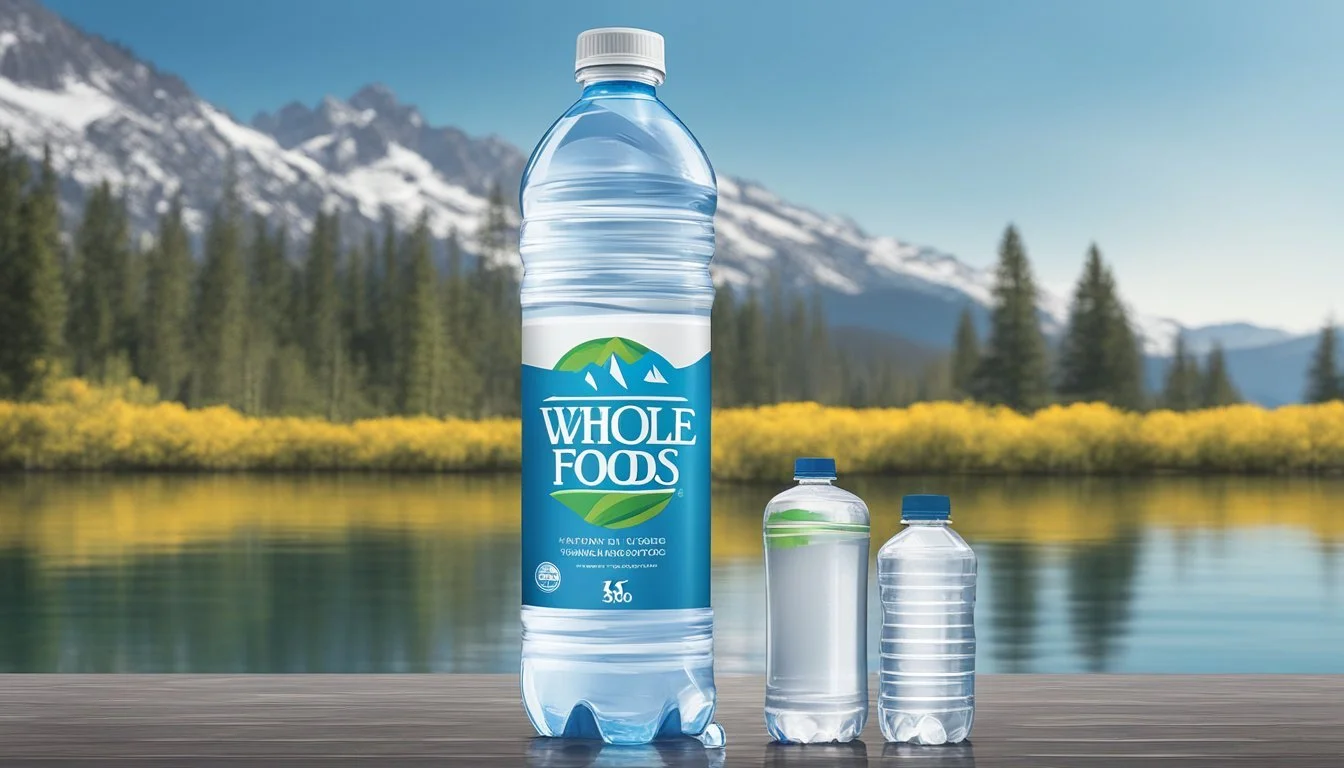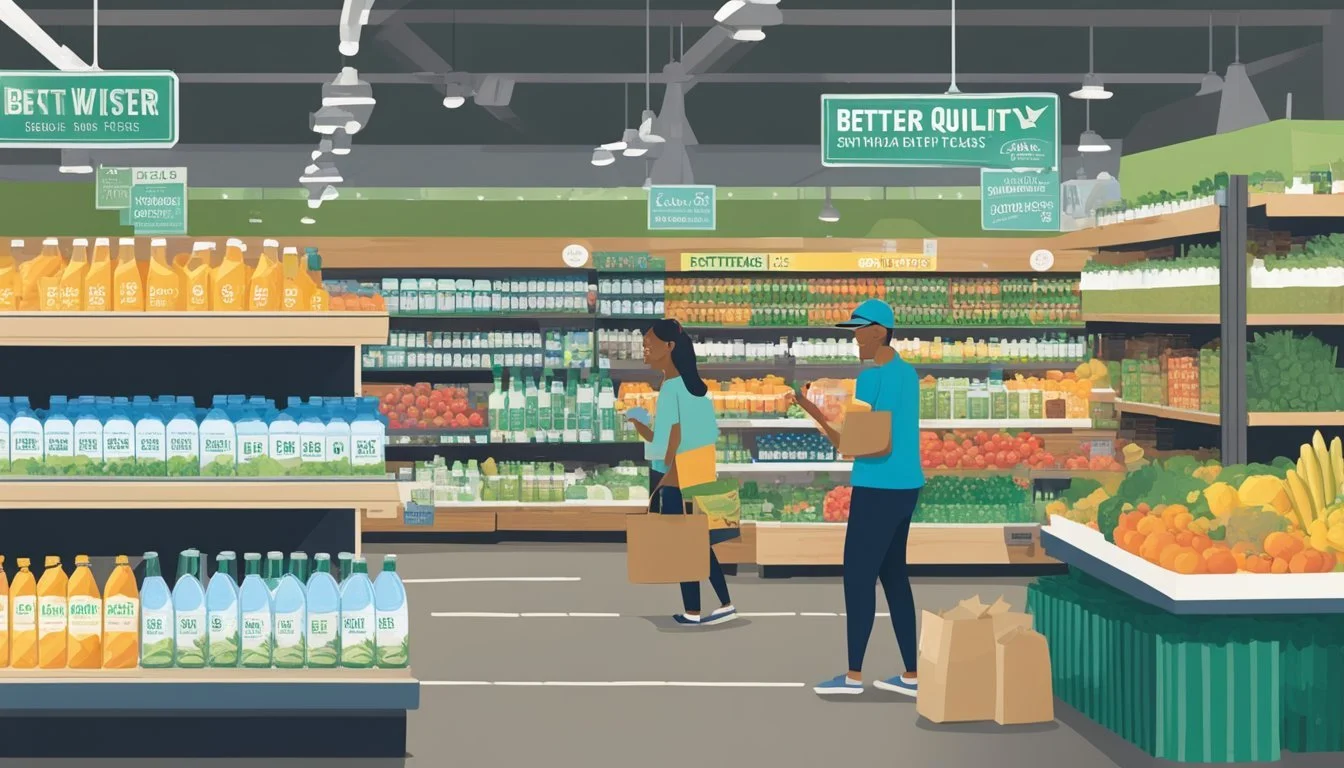Tahoe vs. Whole Foods 365
Comparing Bottled Water Quality
When it comes to bottled water, the choice between Tahoe and Whole Foods 365 often sparks debate among consumers. Tahoe water, known for its crisp and refreshing taste, is sourced from natural springs. Many enthusiasts appreciate its clean profile, which truly sets it apart.
Conversely, Whole Foods 365 water, while marketed as a spring water, presents a different flavor profile. Described as straightforward with a dry aftertaste, it lacks the complexity found in other premium brands. Although reasonably priced, it does not offer the same refreshing quality as Tahoe.
For those looking to quench their thirst with a premium taste, Tahoe may be the better option. Exploring these differences, alongside customer experiences, will help clarify what each brand truly offers.
Comparative Analysis of Bottled Water Brands
This section explores the distinct characteristics of Tahoe and Whole Foods 365 bottled waters, explaining their sources, philosophies, and consumer trust.
Background of Tahoe and Whole Foods 365
Tahoe is known for its clean and refreshing taste, often attributed to its natural spring water source. It appeals to consumers who prefer minimal processing and natural mineral content.
Whole Foods 365 is marketed as a spring water with a straightforward and clean flavor. It is generally considered less complex and typically comes with a reasonable price point, making it accessible to a wider range of consumers.
Overview of Water Sources
Tahoe sources its water from natural springs, taking advantage of the naturally occurring minerals. This type of water typically undergoes minimal filtration.
Whole Foods 365 is also categorized as a spring water, but some reviews suggest its taste is similar to certain purified waters. This could indicate a different filtration process or varying mineral content.
Brand Philosophies and Consumer Trust
Tahoe markets itself as a premium option by emphasizing its natural sourcing and minimal processing. This appeals to consumers who are willing to pay for quality and the perceived health benefits of natural minerals.
Whole Foods 365 focuses on providing a budget-friendly yet reputable option. It emphasizes transparency and straightforward quality, aligning well with Whole Foods' broader brand identity centered on natural and organic products.
Water Quality and Purity Assessment
Assessing the quality and purity of bottled water involves factors like purity standards, contaminant analysis, and mineral content. These elements are critical to understand which brand offers safer and higher-quality drinking water.
Purity Standards and Testing Methods
Both Tahoe and Whole Foods 365 follow stringent purity standards set by regulatory authorities. For bottled water, the FDA regulates the standards, which are similar to those for public water supplies overseen by the EPA. Testing methods include routine checks for microbiological, chemical, and physical contaminants. Additionally, third-party certifications can affirm the purity standards, enhancing consumer confidence in the bottled water.
Contaminant Analysis
Detecting contaminants is vital for ensuring water safety. Both brands undergo testing for contaminants such as PFAS chemicals, Arsenic, Lead, Cadmium, and Mercury. Consumer Reports found that some brands of bottled water contain toxic PFAS chemicals, particularly in carbonated waters. However, reliable brands like Tahoe and Whole Foods 365 ensure their products have contaminants well below the permissible limits, if not entirely absent.
Contaminant Tahoe Whole Foods 365 PFAS Below limit Below limit Arsenic None detected None detected Lead None detected None detected Cadmium None detected None detected Mercury None detected None detected
Comparing Mineral Content
Mineral content plays a significant role in the flavor and health benefits of bottled water. Tahoe often sources its water from natural springs, containing balanced levels of essential minerals like calcium, magnesium, and potassium. Whole Foods 365, a spring water, has a recognizable taste profile with calcium and magnesium contributing to its slight tang. Consumers looking for higher mineral content may prefer Tahoe, while those seeking a simpler flavor profile might lean towards Whole Foods 365.
Mineral Tahoe Whole Foods 365 Calcium Present Present Magnesium Present Present Potassium Present Trace
Both brands maintain rigorous standards to ensure safety and quality, but the differences in mineral content can influence consumer choice.
Health and Hydration
When comparing Tahoe and Whole Foods 365, the health benefits and hydration properties stand out. Each offers unique qualities that cater to different aspects of wellness.
Hydration Benefits
Both Tahoe and Whole Foods 365 ensure effective hydration. Whole Foods 365 is marketed as spring water and is appreciated for its clean taste without complex mineral flavors. Tahoe, with a similar focus, provides consistent hydration benefits.
Water, in general, hydrates the body effectively, and the body doesn’t differentiate between sources as long as the water is clean. Regular intake from either of these brands helps maintain proper fluid balance essential for bodily functions.
Electrolytes and Mineralization
Electrolytes and minerals are crucial for health. Whole Foods 365 contains a balanced mineral profile with pH levels typically ranging from 6.8 to 7.5. This neutral pH aligns with the ideal range for drinking water, enhancing its appeal for daily consumption.
Tahoe water may also contain essential minerals such as calcium and magnesium but tends to avoid heavy mineralization to maintain a neutral taste. These minerals support bone health, muscle function, and overall cellular activity. The precise combination of electrolytes in both brands aids in preventing dehydration, muscle cramps, and fatigue.
pH Balance and its Effects
pH levels are significant for water quality. Whole Foods 365 usually maintains a near-neutral pH, making it a favorable option for balanced hydration. Its pH range of 6.8 to 7.5 ensures it does not disturb the body's internal pH levels.
Tahoe water also balances its pH around neutral, avoiding acidic or overly alkaline levels. Proper pH balance in drinking water can help support overall health, promoting better metabolism and nutrient absorption. Drinking water with a stable pH helps in maintaining the body's equilibrium, aiding in efficient cellular and metabolic functions.
By focusing on these key aspects, one can better understand how Tahoe and Whole Foods 365 contribute to hydration and health.
Taste Profile and Refreshment
Tahoe and Whole Foods 365 bottled waters offer unique taste profiles and levels of refreshment, influenced by factors such as flavor, minerality, and pH levels.
Flavor and Aftertaste Comparisons
Tahoe is often praised for its crisp and clean taste with a slightly mineral-rich flavor. It is generally described as refreshing, with a balanced finish that avoids any lingering aftertaste.
Whole Foods 365 water has a simpler, clean flavor. It lacks complexity and richness, offering a straightforward drinking experience. Some reviewers note a slight dry aftertaste, but it generally avoids any strong metallic or sour notes.
The Role of Minerality in Taste
Minerality significantly impacts the taste of bottled water. Tahoe's higher mineral content contributes to a more robust flavor, making it a favorite among those who prefer distinct tasting water.
Whole Foods 365 has a lower mineral content, which gives it a less complex taste. This might appeal to those who prefer a milder flavor without strong mineral notes. The minerality also affects how refreshing the water feels, with Tahoe often regarded as slightly more invigorating.
The Influence of pH on Refreshment
The pH level of water can influence its perceived refreshment. Tahoe typically has a neutral to slightly alkaline pH, which can enhance its refreshing quality and make it easier on the stomach.
Whole Foods 365 usually has a neutral pH, contributing to its clean but less invigorating taste. A neutral pH level helps in providing a smooth drinking experience without affecting the stomach's natural balance.
Environmental and Sustainability Considerations
Choosing between Tahoe and Whole Foods 365 bottled water involves understanding not just the quality of the water, but the environmental and sustainability impacts of each brand. Key considerations include the types of bottles used, their recyclability, and each brand's sustainability initiatives.
Plastic and Glass Bottling Choices
Tahoe and Whole Foods 365 offer their water primarily in plastic bottles. Plastic is lightweight, which reduces transportation emissions, but poses significant environmental challenges due to its persistence in the environment.
Whole Foods 365 also offers some options in glass bottles, which, although heavier and resulting in higher transportation emissions, are more easily recyclable and do not leach chemicals into the water. Glass has the advantage of being reusable and more environmentally friendly than plastic when recycled properly.
Recycling and Environmental Impact
Recycling rates for plastic bottles are relatively low, creating long-term environmental issues. Plastic bottles often end up in landfills or oceans, contributing to pollution.
Whole Foods 365 provides more information on the recyclability of its packaging, encouraging consumers to recycle responsibly. Utilizing glass bottles where possible reduces the negative impact associated with plastic waste. In contrast, information on Tahoe's recycling initiatives is less prominent, making it harder for customers to make informed decisions about its environmental footprint.
Brand Sustainability Initiatives
Whole Foods 365 actively promotes several sustainability initiatives. These include sourcing water responsibly, reducing their carbon footprint, and supporting recycling programs. They also inform customers on reducing single-use plastics, aligning with broader environmental goals.
Tahoe’s sustainability practices are less documented publicly, which might suggest either a lack of robust initiatives or insufficient communication about existing efforts. Transparency in sustainability practices is crucial for consumers seeking to minimize their environmental impact.
Regulatory and Industry Standards
Tahoe and Whole Foods 365 both adhere to various regulatory and industry standards to ensure they offer safe, high-quality bottled water. This involves compliance with federal guidelines, voluntary certifications, and independent testing to guarantee consumer safety and trustworthiness.
EPA and FDA Regulations
The Environmental Protection Agency (EPA) regulates tap water, setting standards that ensure its safety. Bottled water, however, falls under the jurisdiction of the Food and Drug Administration (FDA).
FDA regulations mandate that bottled water must meet quality standards similar to those set by the EPA for tap water. They outline specific limits for contaminants like lead, nitrates, and microbiological content.
Labeling requirements are also stringent, ensuring that consumers are informed about the source and treatment methods of the water. Both Tahoe and Whole Foods 365 comply with these FDA regulations, reflecting a commitment to consumer safety and transparency.
Voluntary Guidelines and IBWA Certification
Beyond mandatory regulations, many bottled water companies adhere to voluntary guidelines to further assure quality.
The International Bottled Water Association (IBWA) provides a certification program that includes rigorous annual plant inspections. These inspections cover water source protection, purification processes, and bottling techniques.
Companies like Tahoe and Whole Foods 365 often pursue IBWA certification to demonstrate their dedication to maintaining high standards. This certification ensures their water not only complies with federal laws but also meets additional safety and quality benchmarks.
Consumer Reports and Third-Party Testing
To add another layer of assurance, third-party organizations like Consumer Reports frequently test bottled water.
Consumer Reports examines various brands for contaminants such as PFAS chemicals, which are harmful even at low levels. Their findings can highlight discrepancies in quality among different brands.
Third-party testing acts as an external validation, further ensuring that brands adhere to both regulatory standards and voluntary guidelines. Consumers can trust that both Tahoe and Whole Foods 365 undergo such scrutiny, which helps maintain transparency and consumer trust.
Market Presence and Consumer Perception
Tahoe and Whole Foods 365 bottled waters have distinct market presences and consumer perceptions. Their brand recognition, market share, and consumer reviews highlight crucial differences.
Brand Recognition and Market Share
Tahoe is recognized among health-conscious and environmentally aware consumers. Though it doesn’t have the widespread market penetration of some brands, it has a robust presence in specialty stores and select supermarkets.
Whole Foods 365 bottled water benefits from the brand recognition of Whole Foods Market, making it easily accessible nationwide. Its market share is bolstered by being part of a major retail chain. This accessibility gives it a considerable reach among average consumers looking for a convenient option.
Consumer Reviews and Testimonials
Consumers generally view Tahoe positively for its taste and purity. Reviews often praise its premium quality, associating it with a sense of health and wellness. This premium perception makes it a favored choice for those prioritizing these attributes.
In contrast, Whole Foods 365 bottled water reviews highlight its cost-effectiveness. Consumers appreciate the balance it offers between price and quality, often citing it as a reliable daily option. While it may not have the premium reputation, it remains a popular, budget-friendly choice.
Market Trends and Demand
The demand for Tahoe is driven by trends favoring sustainable and healthy living. As more consumers look for eco-friendly and high-quality water options, Tahoe sees growth within its niche market. The brand's commitment to environmental responsibility aligns with current consumer values.
Whole Foods 365 benefits from the overall increase in bottled water consumption, driven by convenience and accessibility. As part of a large retail chain, it can rapidly adapt to market trends and meet consumer demand on a large scale, ensuring its position in a competitive market.
More About Tahoe
Mountain Valley Spring Water vs Tahoe: Which Bottled Water is Better?
Tahoe vs Richard's Rainwater: Which Bottled Water is Better?
Tahoe vs Whole Foods Italian Still Mineral water: Which Bottled Water is Better?
More About Whole Foods 365
Acqua Pana vs Whole Foods 365: Which Bottled Water is Better?
Alkaline88 vs Whole Foods 365: Which Bottled Water is Better?
Antipodes vs Whole Foods 365: Which Bottled Water is Better?
Aqua Carpatica vs Whole Foods 365: Which Bottled Water is Better?
Arrowhead vs Whole Foods 365: Which Bottled Water is Better?
Big Chill vs Whole Foods 365: Which Bottled Water is Better?
Boxed Water vs Whole Foods 365: Which Bottled Water is Better?
Cascade Mountain vs Whole Foods 365: Which Bottled Water is Better?
Castle Rock vs Whole Foods 365: Which Bottled Water is Better?
Core Hydration vs Whole Foods 365: Which Bottled Water is Better?
Crystal Geyser vs Whole Foods 365: Which Bottled Water is Better?
Deer Park vs Whole Foods 365: Which Bottled Water is Better?
Hawaii Volcanic vs Whole Foods 365: Which Bottled Water is Better?
Hawaiian Springs vs Whole Foods 365: Which Bottled Water is Better?
Ice Mountain vs Whole Foods 365: Which Bottled Water is Better?
Icelandic Glacial vs Whole Foods 365: Which Bottled Water is Better?
Just Water vs Whole Foods 365: Which Bottled Water is Better?
Liquid Death vs Whole Foods 365: Which Bottled Water is Better?
Mountain Valley Spring Water vs Whole Foods 365: Which Bottled Water is Better?
Nestle Pure Life vs Whole Foods 365: Which Bottled Water is Better?
Open Water vs Whole Foods 365: Which Bottled Water is Better?
Poland Spring vs Whole Foods 365: Which Bottled Water is Better?
Pure Life vs Whole Foods 365: Which Bottled Water is Better?
Purely Sedona vs Whole Foods 365: Which Bottled Water is Better?
Richard's Rainwater vs Whole Foods 365: Which Bottled Water is Better?
San Pellegrino vs Whole Foods 365: Which Bottled Water is Better?
Simple Truth vs Whole Foods 365: Which Bottled Water is Better?
Smartwater vs Whole Foods 365: Which Bottled Water is Better?
Solan de Cabras vs Whole Foods 365: Which Bottled Water is Better?
Talking Rain AQA vs Whole Foods 365: Which Bottled Water is Better?
Topo Chico vs Whole Foods 365: Which Bottled Water is Better?
Weird Water vs Whole Foods 365: Which Bottled Water is Better?
Whole Foods 365 vs 1907water: Which Bottled Water is Better?
Whole Foods 365 vs BodyArmor: Which Bottled Water is Better?
Whole Foods 365 vs CBD Living: Which Bottled Water is Better?
Whole Foods 365 vs Crystal Lake: Which Bottled Water is Better?
Whole Foods 365 vs Essence pH10: Which Bottled Water is Better?
Whole Foods 365 vs Kirkland Signature: Which Bottled Water is Better?
Whole Foods 365 vs Proud Source: Which Bottled Water is Better?
Whole Foods Italian Still Mineral water vs Whole Foods 365: Which Bottled Water is Better?
Zephyrhills vs Whole Foods 365: Which Bottled Water is Better?







